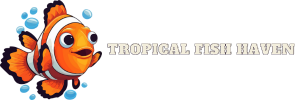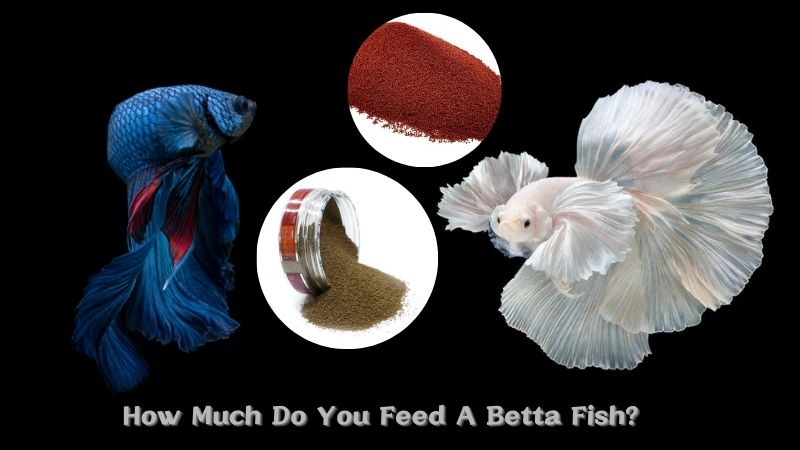Betta fish, with their stunning colors and captivating personalities, are popular aquarium residents. But knowing how much to feed your betta can be tricky. Overfeeding can pollute the water and harm your fish, while underfeeding leaves them malnourished. So how much do you feed a betta fish? The article written here Tropical Fish Haven will help you find the most suitable answer.
Preparing to Feed Your Betta Fish
Determining how much to feed your fish begins with selecting the appropriate food. Being warm-water fish, bettas have a metabolism that requires a higher calorie intake. Their ornate tails and fins require significant energy expenditure during swimming, necessitating both calories and adequate rest periods. Research indicates that betta fish food should ideally contain around 35% dietary protein, derived from a blend of plant and animal sources. While wild bettas primarily consume insects, most pet bettas thrive on a balanced commercial diet that supports their overall health.
The size of pellets in commercial betta diets can vary significantly, making it difficult to establish a universal number of pellets per feeding. Regardless of the diet chosen, it’s unlikely that a betta will consume all the food in the container before it begins to deteriorate. Typically, water-soluble vitamins, such as Vitamin C, lose quality after about six months. Therefore, it’s advisable to replace your betta’s food container before it is completely emptied.
To extend the freshness of the food, storing most of it in the freezer or refrigerator and keeping only a small portion accessible at a time is recommended.
How Much Do You Feed A Betta Fish?
An ideal daily feeding amount for an adult betta is around 1.8 grams, but it doesn’t need to be precise. This guideline applies regardless of the type of food you offer your betta. Betta keepers are not expected to meticulously measure out 1.8 grams of food every day, especially when providing a varied diet. However, if you’re unsure about portion sizes, you might consider weighing out 1.8 grams of the chosen food initially to estimate the appropriate amount.
Some bettas may consume more than 1.8 grams comfortably, and it’s not necessary to strictly adhere to this number. Still, aiming for approximately 1.8 grams serves as a helpful rule of thumb to support the fish’s health.
How Often To Feed A Betta Fish
A good routine is to feed your betta one full portion once daily or divide it into two smaller portions fed twice daily. We suggest feeding twice daily as it helps keep your betta more engaged and content. Bettas are notably intelligent compared to other fish, often remembering their feeding times if kept consistent.
What To Feed A Betta
Providing a varied diet is crucial for ensuring the happiness of your betta. Bettas particularly enjoy live food. If feasible, consider replacing pellets with live food daily. While bettas can thrive on a diet solely of live foods, pellets alone may not suffice. Transition your betta to live food promptly without needing a gradual adjustment period.
Pellets Or Flaked Food?
For beginners, feeding bettas pellets (such as these) is a practical choice, as most bettas tend to be picky about flaked food. Bettas often reject flaked food because it resembles floating debris on the water’s surface. Pellets, on the other hand, mimic insects landing on the water, which bettas naturally consume in the wild.
Feeding between 4 to 6 pellets daily is generally sufficient for a betta. This amount may vary due to differences in pellet sizes manufactured by various brands, so use it as a guideline. If uncertain, aim for approximately 1.8 grams per feeding for an adult betta.
Another factor to consider is the size and age of the betta. Younger bettas require fewer pellets, while older and larger bettas may need more. As bettas approach the end of their lifespan, they may eat less due to decreased appetite, so avoid adding excessive pellets to the aquarium if they are unlikely to consume them. Overfeeding can lead to leftover pellets sinking to the bottom, decomposing, and causing water quality issues.
Additionally, consider the type of fish food you use. Some pellets sink immediately upon contact with water. Most manufacturers producing food specifically for bettas design pellets that float, typically indicated on the packaging.
“When choosing pellets for your fish, it’s important to check the ingredients listed on the food packaging. This information is typically provided somewhere on the label. Ensuring your betta receives the correct nutrients is essential. Pellets specifically formulated for bettas generally contain appropriate ingredients, but the quality can vary between brands. Pay attention to the protein content listed on the pellets; bettas are carnivorous and require sufficient protein, which is crucial for their health. Look for pellets that include dried meats such as brine shrimp, krill, or fish. Aim for a minimum protein content of 30% in the pellets you choose.
Live Food Options for Bettas
Live food typically includes aquatic insects such as bloodworms, brine shrimp, and daphnia, mirroring the natural diet of bettas in the wild and thus offering one of the best nutrition options for your fish. Live food is available in three main forms: live, frozen, or freeze-dried.
Live or frozen versions are preferred for their freshness and nutritional value, commonly found in reputable fish and pet stores. Dried or freeze-dried varieties, like freeze-dried bloodworms, are also suitable and may be more convenient than live options, although they might not offer the same level of nutrition.
Before feeding dried or freeze-dried food, it’s advisable to pre-soak it in aquarium water to prevent potential issues like constipation. When feeding live food to a betta, aim to provide approximately 1.8 grams daily.
Clarifying Terminology: ‘Live food’ refers specifically to insects such as those mentioned. This term encompasses the three different forms available: live, frozen, and freeze-dried. While it might seem redundant to label live food as ‘living,’ this distinction helps differentiate among the various forms available.
Living Foods
Choosing to feed your betta live food is a natural and nutritious option, but it also comes with potential risks. Live food offers high nutritional value and can be very satisfying for a betta, but there’s a risk of disease transmission. Bettas have been known to contract various illnesses from live food, with tuberculosis being the most severe, albeit rare. Once infected, tuberculosis is typically fatal for a betta.
Similar to introducing an infected fish into an aquarium, live food can introduce diseases or parasites that may spread to other fish. Therefore, it’s crucial to purchase live food only from reputable sources or farms. Even then, there’s no absolute guarantee that the live food is disease-free, so it’s important to be cautious if choosing to feed live food to your betta.
Professional and reliable fish stores typically source their live food from reputable farms. These aquatic insects, such as bloodworms, brine shrimp, and daphnia, are kept alive and usually sold in sealed containers. Another option is to purchase eggs and hatch the live food yourself, which provides more control but still carries some risk of disease transmission.
Frozen Live Foods
Most frozen live food is typically sold in cube form, varying in size depending on the manufacturer. Regardless of size, a good guideline is to feed your betta approximately 1.8 grams.
It’s important not to feed a whole cube to one betta as they are usually too large. Instead, cut the cube into quarters. Then take one of these quarters and divide it further into four parts; generally, these smaller portions are suitable for one feeding session. Before feeding, thaw the portions by leaving them on a plate for about 20 minutes.
Although it may not seem like much, this amount is adequate for a betta fish. Remember, a betta’s stomach is about the size of its eyeball, so they can become full quickly!
Don’t Overfeed Your Betta
Bettas have voracious appetites and will eat as much as they can get. Their instinct often urges them to consume more, fearing scarcity as if each meal might be their last. In the wild, bettas seldom encounter abundant food supplies and don’t feed frequently, which explains their tendency to gorge when given the chance. However, overfeeding is rare in natural settings and typically occurs sporadically. When a fish consumes excessive food at once, it can lead to bloating, digestive blockages, and constipation. While occasional instances may not pose significant harm, chronic overfeeding can severely impact a betta’s health.
Conclusion
Finding the right amount of food for your betta requires a balance between their size, activity level, and the type of food offered. By following these guidelines and observing your betta’s eating habits, you can ensure they receive the proper nutrition to stay healthy and vibrant. Remember, a little goes a long way with bettas, so start with smaller portions and adjust as needed.





